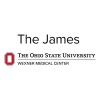
The Incidence of Hepatitis B in Diffuse Large B-Cell Lymphoma/Chronic Lymphoid Leukemia HBsAg-positive...
Large-B-cell Diffuse LymphomaChronic Lymphoid LeukemiaIn this study, we will evaluate the incidence of hepatitis B virus reactivation within the first 6 months of treatment with rituximab, standard chemotherapy and TAF in patients with diffuse Large B-Cell Lymphoma/Chronic Lymphoid Leukemia HBsAg-positive.

Induction Chemotherapy for Locally Advanced Head and Neck Squamous Cell Carcinoma
Locally Advanced Malignant NeoplasmThe benefit of induction chemotherapy followed by chemoradiotherapy for locally advanced head and neck squamous cell carcinoma is unknown. The present study is investigating if this therapeutic strategy improve overall survival.

Capecitabine or Observation for Patients With pT1N+M0 or pT2-3N0M0 Gastric Adenocarcinoma Undergoing...
Gastric CancerGastric cancer (GC) is one of the most common and lethal malignancies in Asia. For early (stage T1) GC, it has been found by analyzing surgical specimens that ~5% of cancers have lymph node metastasis. For patients with stage T2-3N0M0 GCs, there is a considerable probability of micro-metastasis. While the US National Comprehensive Cancer Network (NCCN), the Japanese Gastric Cancer Association (JGCA), and the European Society for Medical Oncology (ESMO) guidelines recommend adjuvant therapy for most patients with resected >T1N0 GCs, the recommendations vary regarding postsurgical treatment for patients with stage T1N+M0 or T2-3N0M0 disease. The JGCA guidelines do not recommend postsurgical chemotherapy for this patient population, while the ESMO support the adjuvant treatment. The NCCN has not offered a definitive recommendation on this issue. Through careful literature search, there is not yet randomized report on whether postsurgical chemotherapy benefits survival for patients with resected T1N+M0 or T2-3N0M0 GC. The first-line chemotherapy regimen for GC is fluorouracil plus platinum. Among fluorouracil, platinum is especially favored due to its less frequent and less severe adverse effects. This large multicenter phase III randomized controlled trial is led by Department of Gastrointestinal Surgery, The First Affiliated Hospital of Anhui Medical University, and carried out in multiple Chinese centers, aiming to compare the safety and efficacy of capecitabine monotherapy versus no therapy in the adjuvant setting for patients with stage T1N+M0 or T2-3N0M0 GC undergoing R0 Resection.

Papaverine and Stereotactic Body Radiotherapy (SBRT) for Non Small Cell Lung Cancer (NSCLC) or Lung...
Lung Non-Small Cell CarcinomaThis phase I trial studies the side effects and how well papaverine hydrochloride and stereotactic radiation therapy body (SBRT) work in treating patients with non-small cell lung cancer. Papaverine hydrochloride may help radiation therapy work better by making tumor cells more sensitive to the radiation therapy. Stereotactic body radiation therapy uses special equipment to position a patient and deliver radiation to tumors with high precision. This method can kill tumor cells with fewer doses over a shorter period and cause less damage to normal tissue. Giving papaverine hydrochloride with SBRT may work in treating patients with non-small cell lung cancer.

Clinical Trial of Autologous Tcm Immunotherapy in ICC
CholangiocarcinomaThe prime purpose of this trial is to evaluate the Progression Free survival and two-year survival of combining autologous Tcm cellular immunotherapy and traditional therapy in intrahepatic cholangiocarcinoma (ICC) patients after radical resection. A secondary objective of the trial is to assess the long-term survival and safety of Tcm cellular immunotherapy and traditional therapy in ICC patients after radical resection. Patients will be randomized 1:1 either to the experimental group to receive autologous Tcm cellular immunotherapy and chemotherapy or to the control group (traditional therapy).

Phase II Trial of Pembrolizumab in Recurrent or Metastatic HNSCC
Metastatic Head and Neck Squamous Cell CarcinomaRecurrent Head and Neck Squamous Cell CarcinomaA single-arm phase II trial to assess the efficacy and safety profile of pembrolizumab in patients with performance status of 2 with recurrent or metastatic squamous cell carcinoma of the head and neck. Patients will receive best supportive care + pembrolizumab 200mg every 3 weeks for a maximum duration of 24 months

DLCL002 Protocol for Patients With High Risk Aggressive B-cell Lymphoma
Diffuse Large B Cell LymphomaHigh-grade B-cell Lymphoma1 morePatients eligible for the study will receive R-DA-EDOCH as the induction therapy and be evaluated by PET CT after the fourth cycle. Patients achieve CR at interim-PET(Deauville score 1-3) will receive either ASCT or the remaining 4 cycles of R-DA-EDOCH, while those achieve PR(Deauville score 4-5) will be rescued by two courses of R(2)-DHAP and then be revaluated by the second interim-PET. Patients who achieved CR+good PR(Deauville score 4) after the rescue therapy will be consolidated with ASCT,and those remain in PR(Deauville score 5) will receive other rescue treatments(including ASCT+CAR T).

Melanoma Margins Trial-II: 1cm v 2cm Wide Surgical Excision Margins for AJCC Stage II Primary Cutaneous...
Cutaneous MelanomaStage IIPatients with a primary invasive melanoma are recommended to undergo excision of the primary lesion with a wide margin. There is evidence that less radical margins of excision may be just as safe. This is a randomised controlled trial of 1 cm versus 2 cm margin of excision of the primary lesion for adult patients with stage II primary invasive cutaneous melanomas (AJCC 8th edition) to determine differences in disease-free survival. A reduction in margins is expected to improve patient quality of life.

The SAFE-Trial: Awake Craniotomy Versus Surgery Under General Anesthesia for Glioblastoma Patients....
GlioblastomaGlioblastoma Multiforme6 moreThe trial is designed as a multicenter randomized controlled study. 246 patients with presumed Glioblastoma Multiforme in eloquent areas on diagnostic MRI will be selected by the neurosurgeons according the eligibility criteria (see under). After written informed consent is obtained, the patient will be randomized for an awake craniotomy (AC) (+/-123 patients) or craniotomy under general anesthesia (GA) (+/-123 patients), with 1:1 allocation ratio. Under GA the amount of resection of the tumour has to be performed within safe margins as judged by the surgeon during surgery. The second group will be operated with an awake craniotomy procedure where the resection boundaries for motor or language functions will be identified by direct cortical and subcortical stimulation. After surgery, the diagnosis of GBM will have to be histologically confirmed. If GBM is not histologically confirmed, patients will be considered off-study and withdrawn from the study. These patients will be followed-up according to standard practice. Thereafter, patients will receive the standard treatment with concomitant Temozolomide and radiation therapy and standard follow up. Total duration of the study is 5 years. Patient inclusion is expected to take 4 years. Follow-up is 1 year after surgery. Statistical analysis, cost benefit analysis and article writing will take 3 months.

A Prospective Multicenter Clinical Trial of MRD-based Treatment Strategy in Children and Young Adults...
Acute Myeloid LeukemiaChildhoodMinimal-residual disease (MRD) will be measured either by flow cytometry, or polymerase chain reaction (PCR) methods, in 3 check-points and it will be one of the decision-making control parameter for the optimal therapy tactics. Patients with initially high-risk group and those with high MRD after 2 initial courses of chemotherapy will be assigned to the allogenic transplantation of the hematopoietic stem cells from Human Leucocyte Antigen (HLA) matched or haploidentical family donors.
